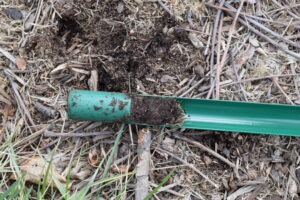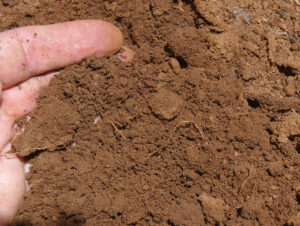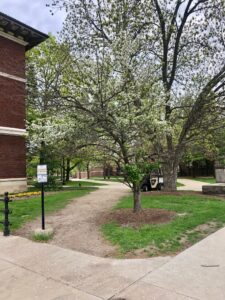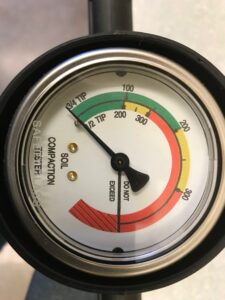PART 1 – The Importance of “Physical” Soil Testing
In my 40 years of teaching and consulting, one of the biggest and most frustrating problems I continually encounter is when so called “landscape professionals” and homeowners continue to apply annual soil fertilizers, lime, and other soil amendments without ever conducting a professional soils test.
Before planting long-lived trees, shrubs, flowering perennials and lawns, it is absolutely essential to have your soil tested for its physical, chemical, and biological properties. To have a beautiful landscape, an awesome lawn, or a very productive vegetable garden, we need to do soil tests because the health and vigor of everything we grow is directly dependent on the soil we are growing our plant’s roots in.
I always ask my clients, “When was the last time you did a professional soils test”? and their usual answer is “What”??? It’s all about the soil environment that we are trying to grow the roots in. Without knowing physical soil compaction, soil drainage, organic matter percentages, soil acidity (pH) and chemical nutrient deficiencies and/or toxicities, our roots may suffer. Continually applying fertilizers, lime, or any amendments without confirming whether there is a proven “need” is considered malpractice by many professionals.
- Figure1: A soil probe can be useful for soil testing and checking for moisture in the soil.
- Figure 2: It is important to recognize the amount of sand, silt and clay in your landscape soils.
As an analogy, when you go to a family doctor or physician, why will they usually require a professional blood test from you? They want to “show you the numbers” of your cholesterol, HDL, LDL, triglycerides, sodium, potassium, and a whole array of other very important blood tests. Again, if they prescribe you to take medications, but they are not helping and can actually hinder your health, lawsuits can definitely occur. I tell my students, before anything is applied on a client’s property, “show me the numbers”!
Although many intelligent homeowners and landscapers may have initially done a chemical soil test, many have never done a soil texture, soil compaction, and/or soil drainage test on their property or their clients. Why do we need to do these “physical” soil tests? Think about it. For root growth, its not just about nutrient deficiencies, toxicities, or soil acidity problems, its about life giving oxygen in the root zone. Without oxygen, the entire ecosystem below ground will suffer. This is why I recommend you to determine your soil texture, (sand, silt, and clay %’s). Professional soils labs can determine your soil’s texture and that is very important, not only for knowing how much and when to water, but to determine what kind of fertilizers will work best for your soil. Many sandy soils are nutrient deficient because they have little negatively charged organic matter or clay to hold onto the positively charged nutrient fertilizers (cations). Excess rain and watering will leach many of the quick-release fertilizers, especially nitrate and potassium out of the root zone. This is why I recommend slow-release fertilizers on most soils so your plant’s roots will have available nutrients for a much longer time.
- Figure 3: Compacted soils are damaging to not just the roots but overall plant health.
- Figure 4: Special tools can be used to determine the level of compac+on.
Soil compaction is another problem I encounter, especially in newly developed, urban sites. If you have a loam or clay soil and it is compacted, you will lose macro-porosity (large air pores) in your soil which is critical for good oxygen supply to your roots. Severely compacted soils (>145-200 psi) have lower oxygen levels and lower moisture retention during droughts and that can severely affect your root system. When it comes to root health, I always ask my clients, “How long can you hold your breath under water”? Roots are the same as humans and we both need oxygen. It’s the power of earthworms that create the oxygen tunnels that allow life-giving oxygen to enter the soil and toxic carbon dioxide and other toxic gases to leave the soil. Charles Darwin’s research has shown that ideally, you should have between 12-15 earthworms per cubic foot of your soil. Soils that are poorly drained, compacted and/or have low organic matter percentages usually are sadly deficient of earthworms and they truly can make a difference.
The beneficial soil bacteria and fungi which are also extremely important to our plants, also need oxygen to function and break down the organic matter into usable nutrients. Hence, if you have poor soil drainage or compaction problems, we need to install drain tiles, grade the surface of the soil to a minimum 1-2% slope, use raised beds, and/or plow, rototill or core aerate the soils before you plant your plants. I’ve seen compaction and drainage issues kill lots of plants because the homeowners or landscapers NEVER did percolation or compaction testing nor did they match the species moisture requirements with the site. Most xeric (dry requiring) and mesic (moist requiring) plants will need a percolation rate of 2-3 inches of water drop per hour. If your perc rate is less than 1 inch of water drop per hour, you better improve the soil drainage and/or compaction and use hydric, wetland or swamp species that have adapted through evolution to survive in wetter soils. Even hydric plants need oxygen, however!
Look for PART 2 in issue 21-07 on 5/11/21



